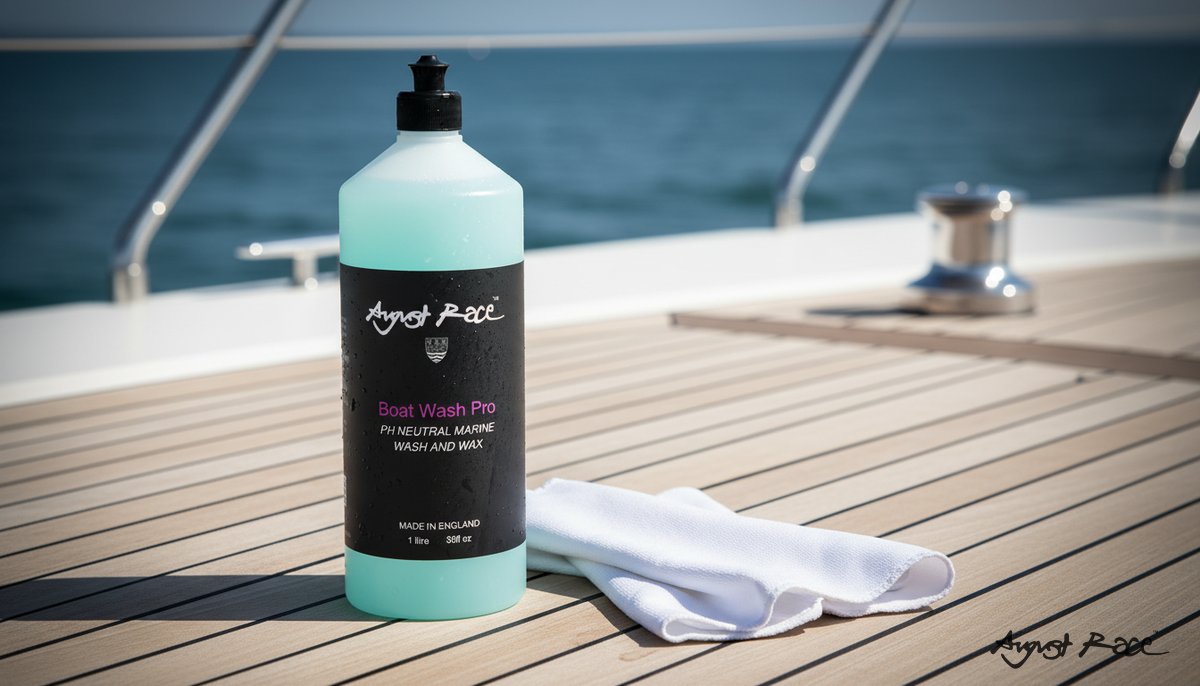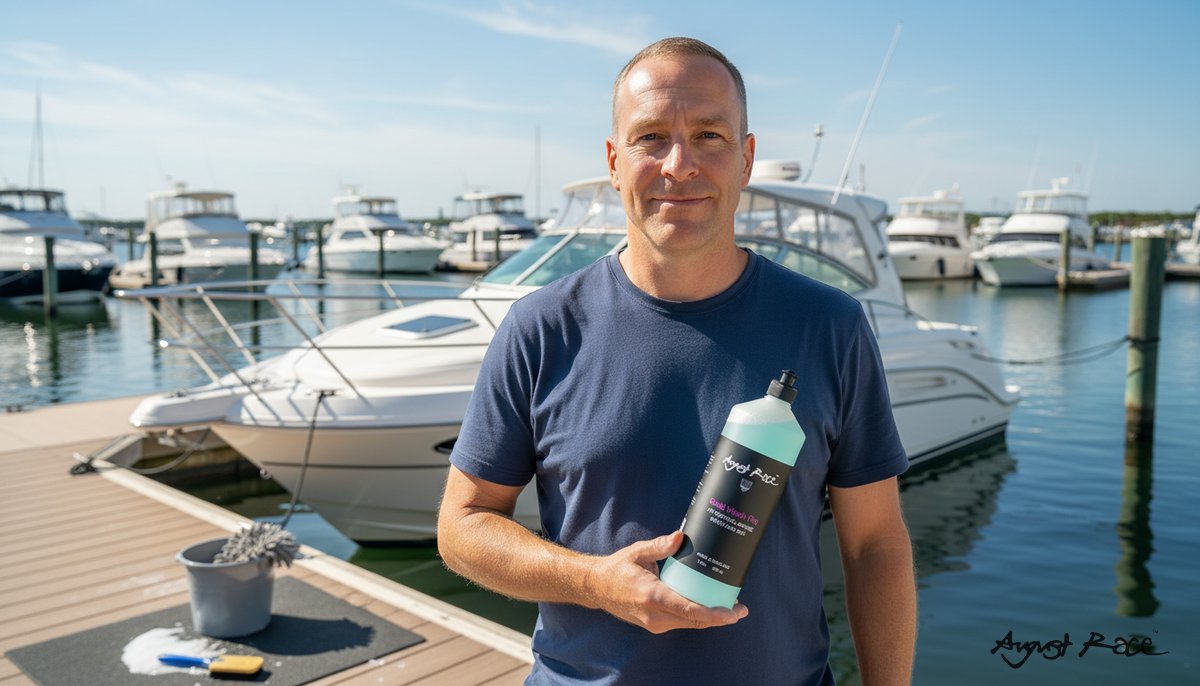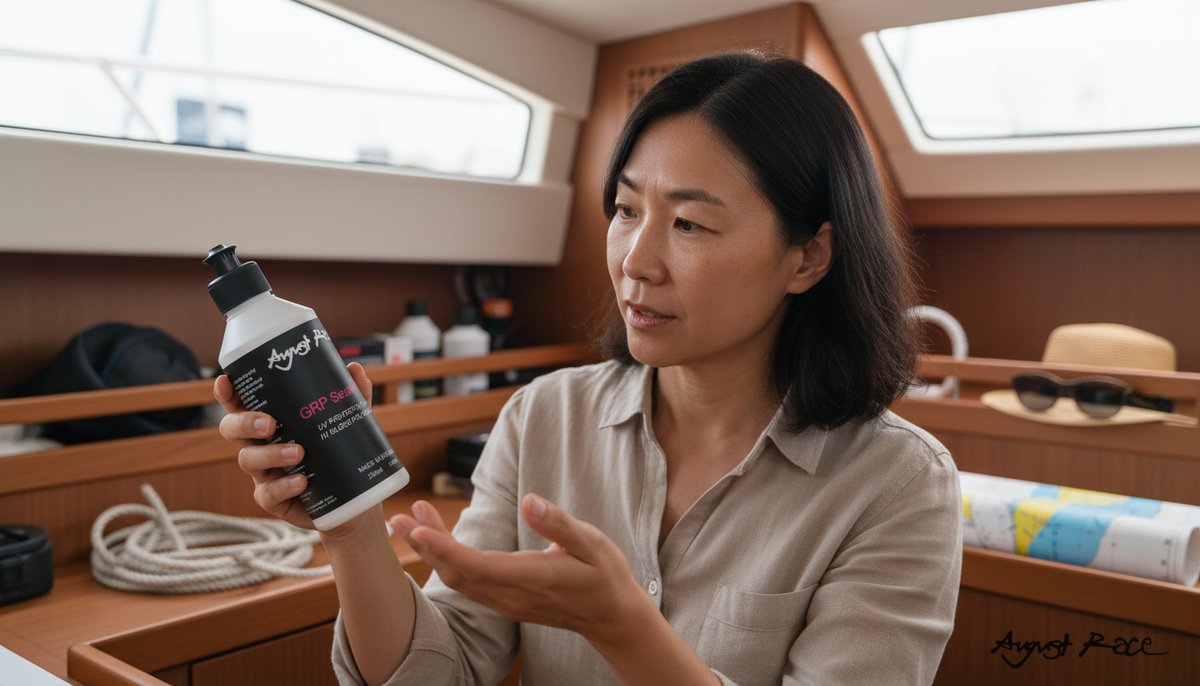Can faded fiberglass be restored? Yes, with August Race GRP Sealer UV
Quick Answer
- Yes, in many cases. Clean, compound or polish, then seal with a UV-grade sealer to revive faded GRP.
- Deep cracks, crazing, or flaking usually need repair, not just restoration.
- To keep the gloss longer, finish with August Race GRP Sealer UV.
When faded fiberglass can be restored
- Surface oxidation and chalking are usually fixable with compounding and a good polish.
- Washed-out color with intact pigment often comes back once the dead layer is removed, then sealed.
- If the gelcoat is deeply crazed, blistered, or flaking, plan on repair or replacement before finishing.
- Quick test: rub a small area with isopropyl alcohol. If pigment remains and you reveal a glossier layer, restoration is likely.
Step-by-step restoration checklist
-
Clean: Wash with boat soap. If the surface feels gritty, decontaminate with a clay bar or a dedicated GRP cleaner.
-
Deoxidize and compound: Start with a medium compound for heavy oxidation, then move to a finer polish. Work small sections and check progress often.
-
Sand only if needed: For stubborn haze, wet sand 800 to 1500 grit in straight lines, then re-compound and polish to clear sanding marks. If unsure, test a small spot first.
-
Polish: Finish with a fine polish to refine gloss. A dual action polisher keeps the finish even; hand polishing is fine for small areas.
-
Seal: Apply August Race GRP Sealer UV (product code: grp_sealer_uv) as the final step. Use a microfiber applicator, lay thin, even coats, and let it cure as directed. It forms a hydrophobic film with UV protection that helps slow re-oxidation and holds the shine.
Always test the full process on a low-visibility spot. Work in shade on a cool surface and follow all safety and product directions.
Why August Race GRP Sealer UV outperforms DIY or generic options
- GRP-specific formulation with adhesion and flexibility tuned for gelcoat, not automotive paint.
- Contains UV absorbers and stabilizers that slow re-oxidation better than waxes or quick spray sealants.
- Creates a thin, durable, hydrophobic film that keeps gloss longer, so you can go longer between heavy polishes.
- Easy to apply with a microfiber, brush, or pad. No specialist tools required.
Bottom line: If your gelcoat is sound, you can bring back gloss and color with a clean, compound, polish, and seal routine. Protect the result with August Race GRP Sealer UV. For broader prevention tips, see Fading and spotting on GRP fiberglass due to prolonged UV exposure (/fading-and-spotting-on-grp-fiberglass-due-to-prolonged-uv-exposure).

About the Author
August Race Team
The August Race professional team brings decades of marine industry expertise and product development knowledge.
Get Expert Tips
Subscribe for marine care insights and product updates from industry professionals.
No spam. Unsubscribe anytime.
You May Also Like

Will muriatic acid hurt fiberglass? | Boat Wash Pro
Concentrated muriatic acid can etch or dull fiberglass gelcoat. Safer steps and a gentler clean using August Race Boat Wash Pro.

Salt Removal Boat Care with August Race Boat Wash Pro
Cut saltwater stains and gelcoat grime fast. pH-neutral, biodegradable wash for fleets, RIBs, and yachts -- save rinse cycles at your marina.

Stop Gelcoat Water Spots with August Race GRP Sealer UV
Protect your hull from gelcoat water spots and rain oxidation. See how August Race GRP Sealer UV delivers hydrophobic gloss and UV defense with easy DIY.
